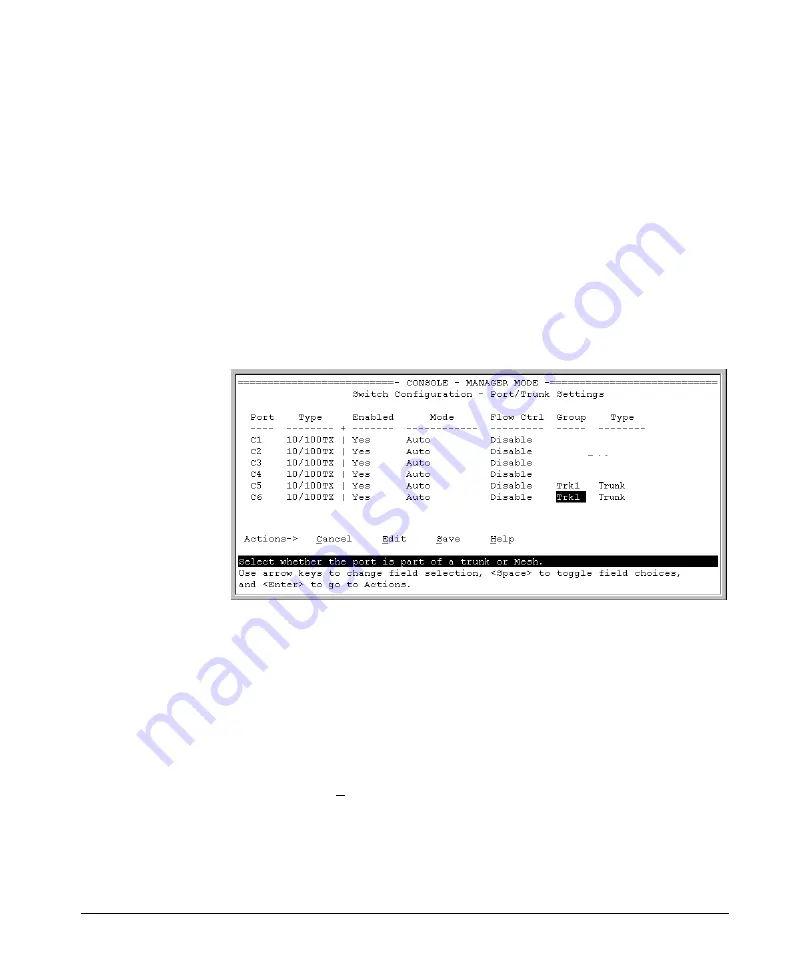
Port Trunking
Port Status and Configuration
•
All ports in a trunk must have the same media type and mode (such
as 10/100TX set to 100FDx, or 100FX set to 100FDx). The flow control
settings must also be the same for all ports in a given trunk. To verify
these settings, see “Viewing Port Status and Configuring Port Param
eters” on page 10-3.
•
You can configure the trunk group with one to eight ports. If multiple
VLANs are configured, all ports within a trunk will be assigned to the
same VLAN or set of VLANs. (With the 802.1Q VLAN capability built
into the switch, more than one VLAN can be assigned to a trunk. See
the chapter “Port-Based Virtual LANs (VLANs) and GVRP” in the
Advanced Traffic Management Guide
.)
(To return a port to a non-trunk status, keep pressing the Space bar
until a blank appears in the highlighted Group value for that port.)
Figure 11-3. Example of the Configuration for a Two-Port Trunk Group
6. Move the cursor to the Type column for the selected port and use the
Space bar to select the trunk type:
–
LACP
–
Trunk (the default type if you do not specify a type)
All ports in the same trunk group on the same switch must have the same
Type (
LACP
or
Trunk
).
7. When you are finished assigning ports to the trunk group, press
[Enter]
,
then
[S]
(for
Save
) and return to the Main Menu. (It is not necessary to
reboot the switch.)
During the Save process, traffic on the ports configured for trunking will
be delayed for several seconds. If the Spanning Tree Protocol is enabled,
the delay may be up to 30 seconds.
11-9
Summary of Contents for ProCurve Series 2810
Page 2: ......
Page 3: ...ProCurve Series 2810 Switches July 2006 Management and Configuration Guide ...
Page 56: ...Using the Menu Interface Where To Go From Here This page is intentionally unused 3 16 ...
Page 240: ...Port Trunking Port Status and Configuration This page is intentionally unused 11 26 ...






























